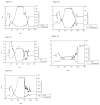Modeling Addictive Consumption as an Infectious Disease
- PMID: 21339848
- PMCID: PMC3041945
- DOI: 10.2202/1538-0645.1482
Modeling Addictive Consumption as an Infectious Disease
Abstract
The dominant model of addictive consumption in economics is the theory of rational addiction. The addict in this model chooses how much they are going to consume based upon their level of addiction (past consumption), the current benefits and all future costs. Several empirical studies of cigarette sales and price data have found a correlation between future prices and consumption and current consumption. These studies have argued that the correlation validates the rational addiction model and invalidates any model in which future consumption is not considered. An alternative to the rational addiction model is one in which addiction spreads through a population as if it were an infectious disease, as supported by the large body of empirical research of addictive behaviors. In this model an individual's probability of becoming addicted to a substance is linked to the behavior of their parents, friends and society. In the infectious disease model current consumption is based only on the level of addiction and current costs. Price and consumption data from a simulation of the infectious disease model showed a qualitative match to the results of the rational addiction model. The infectious disease model can explain all of the theoretical results of the rational addiction model with the addition of explaining initial consumption of the addictive good.
Figures



References
-
- Becker GS. Habits, Addictions, and Tradition. Kyklos. 1992;45(3):327–346.
-
- Becker GS, Grossman M, Murphy KM. An Empirical Analysis of Cigarette Addiction. The American Economic Review. 1994;84(3):396–418.
-
- Becker GS, Murphy KM. A Theory of Rational Addiction. Journal of Political Economy. 1988;96(4):675–700.
-
- Bitton A, Fichtenberg C, Glantz S. Reducing Smoking Prevalence to 10% in Five Years. JAMA. 2001;286(21):2733–2734. - PubMed
-
- Carson NJ, Rodriguez D, Audrain-McGovern J. Investigation of mechanisms linking media exposure to smoking in high school students. Preventive Medicine. 2005;41(2):511–520. - PubMed
Grants and funding
LinkOut - more resources
Full Text Sources
Miscellaneous
